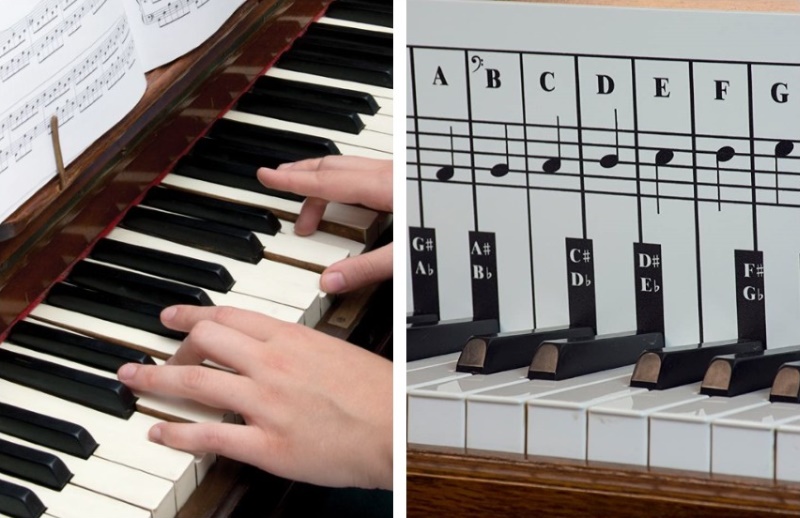
Pianos have been around for centuries and though some of the features have changed, the layout of the keys and how to play them have remained the same. No matter what type of piano you’re playing, from the huge grand pianos to the small digital ones, you’ll be able to play them all in the same fashion. Of course, first, you need to learn how to play the piano in order to create the beautiful music these instruments are known for.
It may seem tricky when you’re first trying to figure out how to learn piano keys but it is easier than you may think. Many people do so without an instructor, checking out online tutorials or apps to help them with this process. The following tips and tricks on how to learn the keys on a piano can get you started.
The piano keyboard layout has a very specific design. This isn’t by accident, either, since the layout makes a great deal of sense when you actually sit down and begin learning the keys. Let’s take a look at all of the aspects of a piano keyboard.
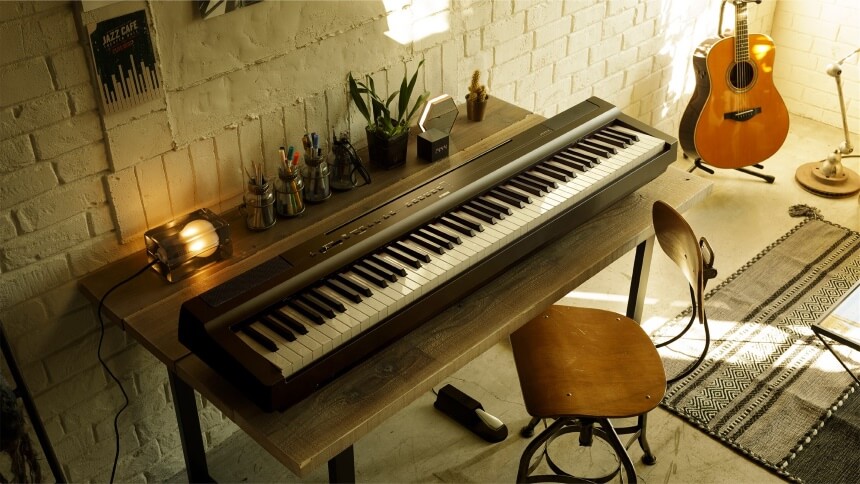
Today, the standard number of keys on both digital and acoustic keyboards is 88. The Yamaha P-125 sticks to this standard, with 88 keys that are heavier on the low end and lighter on the high end for a more dynamic and authentic feel while you play.
Of course, there are several models that go below this. If you look at the best digital pianos under $300, you’ll notice that several of them only have 61 keys and one only has 25 keys. This alters the size of the piano and does limit the range of octaves.
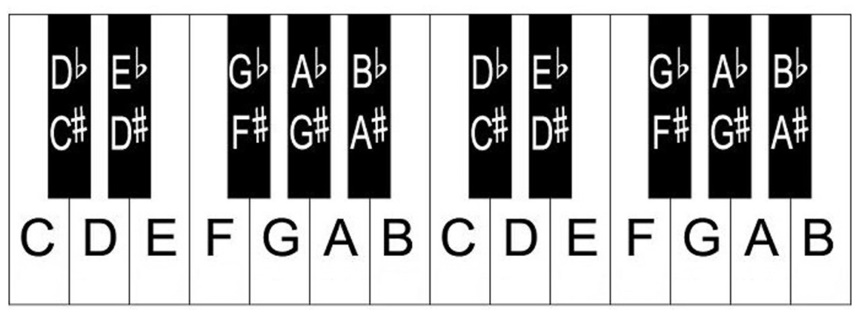
For pianos, the scale starts with the C rather than the A. When first attempting to learn the piano keys and notes, the easiest way is to find a C key. This is easy to locate if you know where to look. As well as the white keys, there are also black keys arranged in groups of three, then two. This pattern continues along the length of the keyboard. The C keys are always located directly to the left of the first black key in the pair grouping. Each white key after that follows the alphabet until G, then begins back at A again.
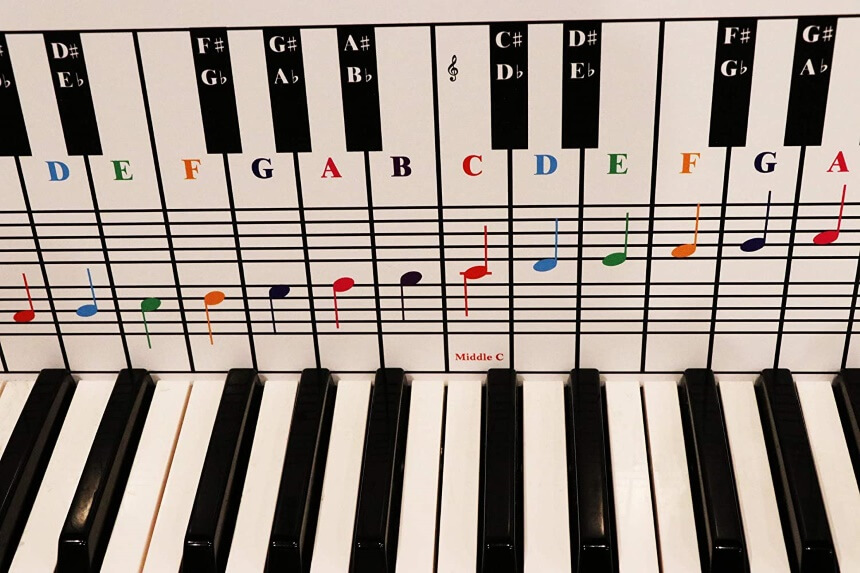
Two white keys are separating the pair of black keys from the following triple set of black keys. The first key in this sequence is the F sharp and G flat key, the second one is the G sharp and A flat key, and the third is the A sharp and B flat key. This pattern then continues with the next set of two black keys.
As well as creating new notes, the black keys make it easier to play without looking at the keys, due to their raised positioning and specific pattern. Though it may take some time to accomplish this, most pianists get used to this pattern quickly, so they can focus on the music instead of their hands while they play.
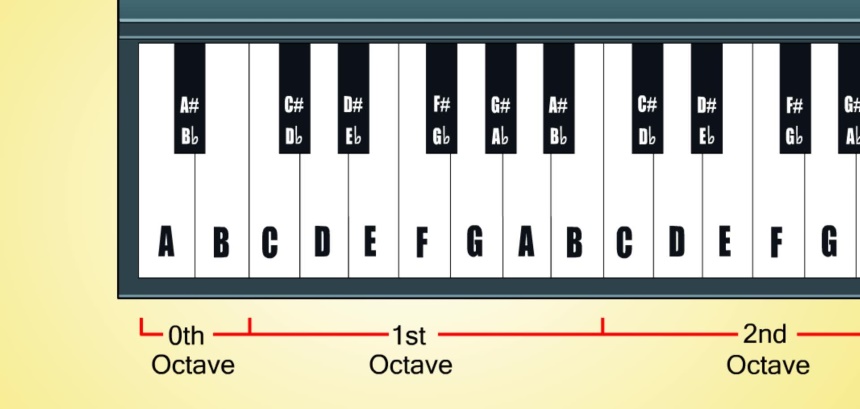
Once you’ve figured out the notes on the keys and how to find them, it’s time to start learning the notes on the sheet music that you’ll be using to play songs.
When you look at a piece of music, you’ll notice that the notes are all written on a set of 5 horizontal lines. This lined area is called the staff and it is designed to give you a visual interpretation of the letters of the scale. The notes appear on the lines and the spaces between the lines, though their position can change depending on whether the staff is in treble or bass.
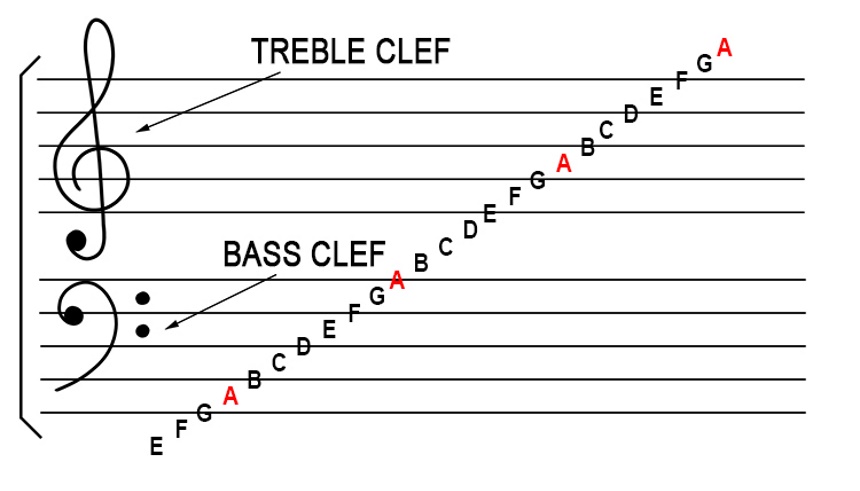
Treble and bass clefs Trusted Source Musical Notation - The Method Behind the Music Especially in the days before audio recording and playback, music was often written out as a means of preserving and communicating it. To do this, a system of notation was developed that gives musicians the information they need to play music as the composer intended it. method-behind-the-music.com are represented using specific symbols at the beginning of the staff. On a treble staff, notes on the bottom, or first, line are E notes. Then the notes continue through the alphabet for each space and line following the first line. So, the space right above the first line would be an F, then the second line is a G, and so on until the F on the very top line in the staff.
Bass staffs use the same musical alphabet, though the notes begin differently than on the treble staff. The first line is the G note instead of an E for the bass staff. The space right above this line is an A, then the second line is a B, and so forth until the top line, which is an A note.
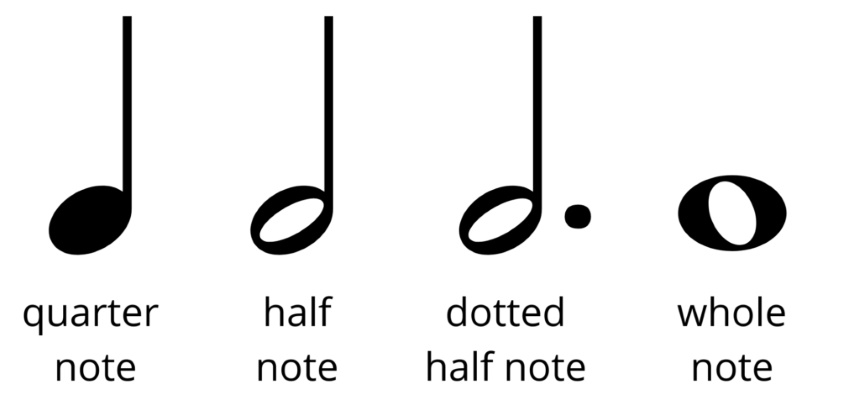
The full notes are depicted as a hollow circle, with no lines extending from it, and are played for the full length of the note. A half note is also a hollow circle like the whole note, except it includes a vertical bar that tells you that the note is only played for half of the duration of a normal full note. A quarter note is a circle, though it is black in the center and also includes a vertical line and is played for only a quarter of the duration of a full note.
Part of learning the notes on the keyboard is memorizing their placement, which can be tricky for some people. Luckily, there are several ways to make this easier, so you can try out the method that works best for you or even use a few of them to speed up this process.

For instance, when using a treble staff, the lined notes are E, G, B, D, and F, so you could use a mnemonic phrase, such as Every Good Boy Does Fine. The space notes are F, A, C, and E, so you can make up a phrase to match those or just use the word “Face” since the letters of this word are in the same order as the notes on the staff.
You can also come up with mnemonic phrases for the bass clef notes, which are G, B, D, F, and A for the lines. One option is Good Boys Do Fine Always, while the A, C, E, and G notes on the spaces could be memorized using the phrase All Cows Eat Grass.
One of the best ways to learn the keys, especially for beginners, is to mark them using stickers or tape. Place the tape on the keys in the middle octave. Write the letter of each key on the tape after sticking it on the key, starting with the C key and continuing until you reach the B key at the end of the octave.
Masking tape is a good option for this, though the color of the tape could blend a bit with the color of the keys. If you want a tape that will stand out, you can also use electrical tape. Also, be sure to use a black marker to ensure it is quite visible on the keys while you’re playing.
Muscle memory happens when you do something often enough for your fingers to learn the movements well enough that you don’t need to really control them. They begin to learn how to find the places they’re supposed to be on their own. This happens when learning to type on a computer keyboard or when playing video games as well as learning to know piano keys.
The more you practice the scales by playing them in order with each hand, the more your fingers will learn the feel of the keys beneath them, and the faster your muscle memory will kick in. Before you know it, you’ll be ready to upgrade your beginner instrument for the best digital piano for classical pianists.
Every note has a distinctive sound, so if you listen hard you can learn the resonance and tone of each of the notes when you press the keys. This isn’t something that will happen overnight, so you’ll have to spend some time practicing this process to learn the differences between each note.
The best way to begin to learn the notes’ sounds is to select one of the keys in the middle octave. Hold it down and listen to the note, humming until you’ve matched it exactly. Do this with every note, repeating the process every time you practice until you can make the sound without pressing the keys. Once you’ve learned the sounds of each note, you’ll be able to hear any mistakes that you make when you’re playing during practice.
How to learn piano keys for beginners is no easy task, though there are ways to make this process easier. Using the methods we listed above is a great way to get started, plus you can use handy accessories, like the Walrus Productions Mini Laminated Chart to keep the notes and chords right in front of you. The following tips can also ensure that you are on your way to making some beautiful music.
When learning how to play the piano, it’s best to start with simple songs rather than struggling with more complex songs and fast notes. Despite your age, children’s songs may be a good choice since they are rarely as complicated as the music written for adults.
No matter what song you choose, take it slow and steady until you become more familiar with the notes that you’re trying to play before speeding it up. Then, when you’ve learned the keys well enough to have mastered the simple songs, you can move on to more intermediate sheet music to test your skills.
Eventually, your skills will have improved enough to try advanced songs, though you still may need to play it more slowly than intended until your muscle memory kicks in and you can play the song much faster.
No one ever gets better at anything without practicing. Whether you’re learning to write, type, play sports, or learning a musical instrument, practice is the only way you’ll ever get any better at anything. Learning to play the piano is no exception. You need to put in as much practice time as you can to get better.
If you don’t practice or do so only sporadically, you will likely have trouble remembering the placement of the keys and the notes on the staff. You also won’t develop the muscle memory that we discussed above, so you’ll always have to focus on what your fingers are doing instead of letting them move on their own while you focus on the sheet music.
For the best results, practice playing the piano every day if possible, for at least an hour. Even if you have to shorten your practice time on occasion, you should still improve your piano playing over time with regular practice sessions.
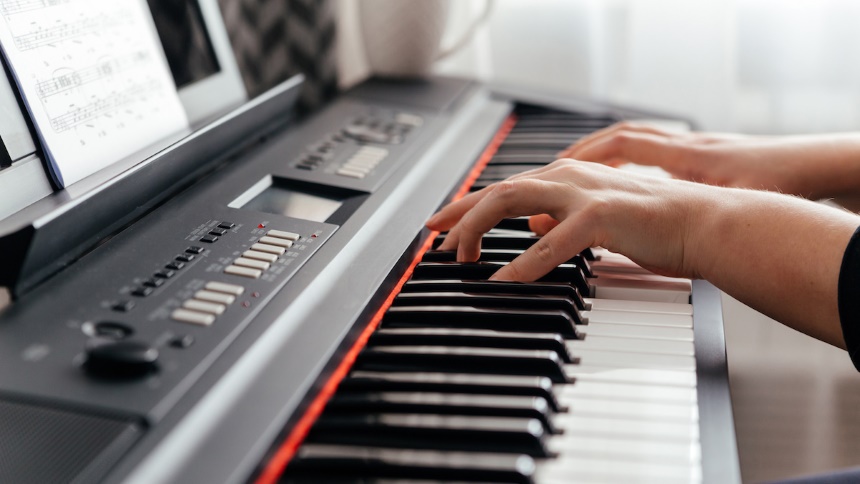
Acoustic pianos feature a hammer action system that includes a felt-tipped hammer that strikes a string every time you press one of the keys. This mechanism includes a specific weight and feel, also called the action, when you play the piano. The lighter the action, the easier the piano is to play.
Digital pianos don’t include the same type of mechanism, though many of them include weight keys that simulate the same feeling as the hammer system to give the piano a more authentic feel. Digital pianos are more compact than acoustic models, so they take up less space and many of them are portable, plus they cost a lot less, making them a better choice for beginners or those on a budget.
The piano is a versatile instrument that can be used to play almost any type of music, from classical to rock to country. Of course, even the best musicians in the world didn’t learn to play the piano overnight. It takes a great deal of practice to get to the point where you can play flawlessly every time you sit down and place your hands on those keys.
Figuring out how to learn piano keys can take some trial and error, though using the techniques that we’ve described above to learn which keys are for which notes and how to remember their placement is a good place to start. The memorizing techniques, like marking the keys, learning their sounds, mnemonic devices, and muscle memory can all help you achieve your goals. Before you know it, you’ll be playing all of your favorite songs.